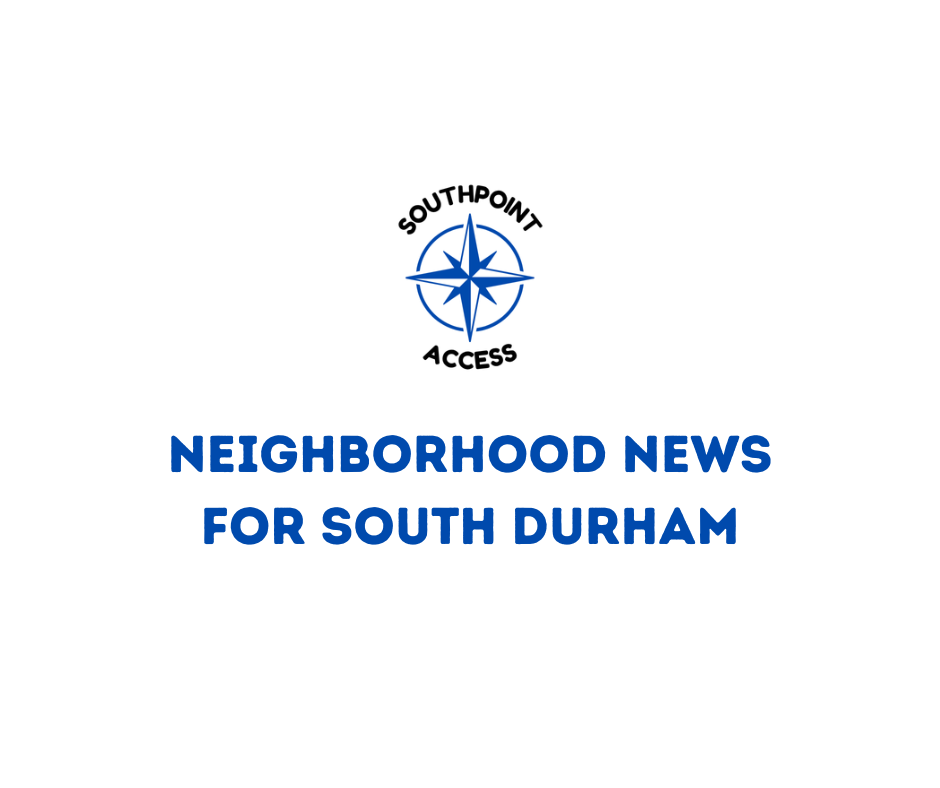Getting Over the Hump in Durham

Originally published by Lucas Thomae, Carolina Public Press on Aug. 14, 2024
As other municipalities across North Carolina are updating their traffic safety efforts to reflect current best practices, some Durham residents are concerned their city is falling behind in permitting speed humps or other options.
The Bull City boasts on its website that in 2017 it became one of the first North Carolina cities to adopt a Vision Zero program, an initiative which aims to reduce traffic fatalities and injuries.
Pedestrian collisions in Durham happen at consistently higher rates than the state average, peaking in 2018 at more than five collisions per 10,000 residents before decreasing in more recent years. According to data from the NC Department of Transportation, 91 pedestrians and cyclists were hit by motor vehicles within the city limits in 2022.
Some residents told Carolina Public Press that Durham’s slow and restrictive speed hump policy and lack of other options when it comes to traffic calming suggest that the city’s actions aren’t measuring up to its promises.
Speed humps are raised sections of a road that require vehicles to pass over them at low speeds. They are wider and not as tall as speed bumps, making them less jarring to drivers and an increasingly popular method of traffic calming.
Records obtained by CPP show that of the 141 requests for speed humps by Durham residents in 2023, only three resulted in speed humps being installed or approved for installation. The city denied nearly 90% of the requests for not meeting the street eligibility requirements laid out in Durham’s speed hump policy.
Speed humps are the only method of traffic calming for which there exists a formal citywide process for implementation. That’s because the city council hasn’t approved any other traffic-calming alternatives, even if those might be preferable in certain cases, such as those that don’t qualify for the speed humps under the city’s rules.
While Durham’s transportation department is working towards building out its Vision Zero strategy and supporting a handful of other initiatives to address these shortcomings, residents who’ve had their requests for speed humps denied told CPP they’re frustrated with the city’s seeming lack of progress since committing to addressing traffic safety.
Vision Zero Coordinator Calls Policy ‘Outdated’
Durham’s speed hump policy was approved by the City Council in 2015, two years before the city adopted its Vision Zero program, and it has stuck with that policy for the last nine years.
In December, Durham brought on former transportation planner Lauren Grove to be the city’s first Vision Zero coordinator. Grove told CPP that she thought the speed hump policy is “outdated” and “probably needs to be brought up to best practices.”
Grove previously led Vision Zero efforts in Houston, a city eight times larger than Durham. However, many similarities exist between the two when it comes to their approach to traffic calming, she said.
“We had a speed hump policy — it was very restrictive,” Grove said. “There was no funding for it, just like in Durham. Even if you get approved, you then have to wait for funding or hope that council approves it.”

For a street to be considered for speed humps in Durham, it must have a posted speed limit of 25 miles per hour or less, be at least 750 feet in length, have a minimum average daily traffic volume of 250 vehicles per day, and not be on a transit or EMS route. Additionally, the 85th percentile speed on the street must exceed the speed limit by at least 10 miles per hour.
If the street is found to meet those requirements, the neighborhood must then produce a petition bearing the signatures of at least 75% of the affected block approving of the speed hump.
If the previous steps are completed, the project must then be approved for funding by the city council before a contract for construction is awarded through a competitive bidding process.
Durham’s speed hump policy is among the most restrictive of North Carolina’s cities. In fact, many cities like Charlotte, Raleigh, and Greensboro have modified their traffic-calming policies in recent years to make them less restrictive.
None of the aforementioned cities have an 85th percentile speed threshold requirement as high as what Durham mandates.
In 2022, Charlotte stopped requiring neighborhood petitions to request speed humps. Rather than having a long list of disqualifiers for receiving speed humps, Raleigh and Greensboro both use points-based systems to prioritize streets most in need of traffic calming.
If a street does not qualify to have speed humps, Durham does not consider it for any other types of traffic calming. Although traffic safety researchers say alternatives like lane narrowing and traffic circles can be just as effective as speed humps, or even preferable in some cases, officials from Durham’s transportation department say the city council must first approve such treatments.
“That’s why you end up getting so many requests for speed humps, because that’s all we’re really able to do,” Grove said.
Kristin Blank, a communications specialist at the UNC Highway Safety Research Center, said a one-dimensional approach to traffic calming isn’t nearly as effective as having a multitude of options for different situations.
“Coupling speed humps with (other traffic calming methods), specifically design changes to narrow roadways, will likely be more effective at achieving speed reductions the residents want to see,” Blank said.
Grove shares this sentiment. She’s leading the effort to create a Vision Zero action plan which she plans to complete and present to the city council for approval by the year’s end. Part of that action plan, she hopes, will include what she calls a traffic calming tool kit — a plethora of approved traffic calming methods that can be tailored to each unique situation.
“You can open a toolbox and have different tools … within arm’s reach depending on what the need is,” Grove said. “The same thing could go for a traffic calming policy.”
Residents Upset Over Speed Hump Denials
People who live in Durham can request speed humps in their neighborhood via an online portal called Durham One Call.
CPP obtained a spreadsheet maintained by the Department of Transportation tracking speed hump requests made via Durham One Call, and found that the city denied a large majority of requests for not meeting the eligibility criteria defined in the speed hump policy.
Durham residents made 141 requests related to speed humps last year, of which 124 were denied for not meeting the speed hump policy criteria. Forty were denied for being on an EMS or bus route. Another 42 did not meet the 85th percentile speed threshold.

John Brown is one of those residents whose request was denied for not meeting the speed requirement. He lives on Higbee Street, which he said is often used as a cut-through to avoid traffic on North Roxboro Street.
“I’ve noticed an uptick in traffic,” Brown said. “It was bad before COVID, but then after COVID it got much worse because of the number of people who have moved here. When I reached out (to request speed humps) that’s when I learned about some of the arbitrary laws that are used to deny people speed humps.”
After initially being denied, he and other residents of his neighborhood met with representatives of the transportation department to discuss their concerns, but to no avail. However, Brown told CPP that his frustration lies mostly with the city council for its inaction on an up-to-date traffic calming policy.
“The people doing the work themselves know of the problems, know what needs to be done to address it, but many times city council or the elected officials are just dragging their feet, and it’s not a priority until it becomes a wedge issue or a tragedy happens,” Brown said.
Durham Mayor Leonardo Williams declined to comment on the City Council’s role in traffic calming policy, instead deferring back to the city transportation department.
Potential Paths Forward
Grove told CPP that the journey toward improving Durham’s traffic calming infrastructure starts with better data collection and more engagement with the community.
One of the main issues she sees with how the city carries out traffic calming is that it relies on a response-based model. That leaves out people in underserved communities that may not have the resources required to request traffic calming, like internet access.
Better data collection of Durham streets would allow the city to determine which communities may need traffic calming interventions and engage with them itself.
“We have to be responsive, but (we’re) trying to find a balance with being more proactive and identifying communities themselves and then going out to the community,” Grove said.
The city is also developing another initiative which could bring more traffic-calming infrastructure to select communities. Durham’s Equitable and Green Infrastructure (EGI) initiative is a collaboration between several city departments which aims to invest in communities that have “historically been excluded from or harmed by policy decisions.”
The city chose several neighborhoods to focus their efforts on and has started work on several infrastructure projects within those communities, including traffic calming.
Assistant Transportation Director Bill Judge told CPP that the initiative secured $700,000 in funding for traffic calming infrastructure in those seven neighborhoods. The city recently executed a contract with a contractor to help with engagement, data collection, project planning and design.
About $360,000 remains for construction of traffic calming treatments, not all of which will be speed humps. Judge told CPP he anticipates the project using a “variety of solutions.”
Brown doesn’t live in one of the communities receiving EGI funding, but he said he welcomes the use of alternatives to speed humps.
“I don’t really care how the city does it,” he said. “They just need to find a way to get people off these side streets who are using them as pass-throughs, because the engineering and behavior are misaligned.”
This article first appeared on Carolina Public Press and is republished here under a Creative Commons license.
![]()

![[WordroW] Worrisome Weather](/content/images/size/w600/2025/12/wordrow1.png)

![[SoDu Alert] Durham Public Schools Closed Dec. 5 Due to Weather](/content/images/size/w600/2025/12/icyweather124.png)